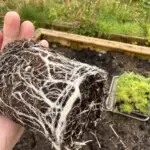
If you want to get your garden started on the right foot this year, it helps to be prepared. Yet, even with the most detailed garden plan in hand and carefully tended seedlings at the ready, it seems we all still make the occasional gardening faux pas.
But not this year.
I’ve got you covered with a list of the most common mistakes we all make when planting vegetables each spring. Grab a cup of coffee and read up to ensure a successful start to the season.
1. Planting Without a Plan
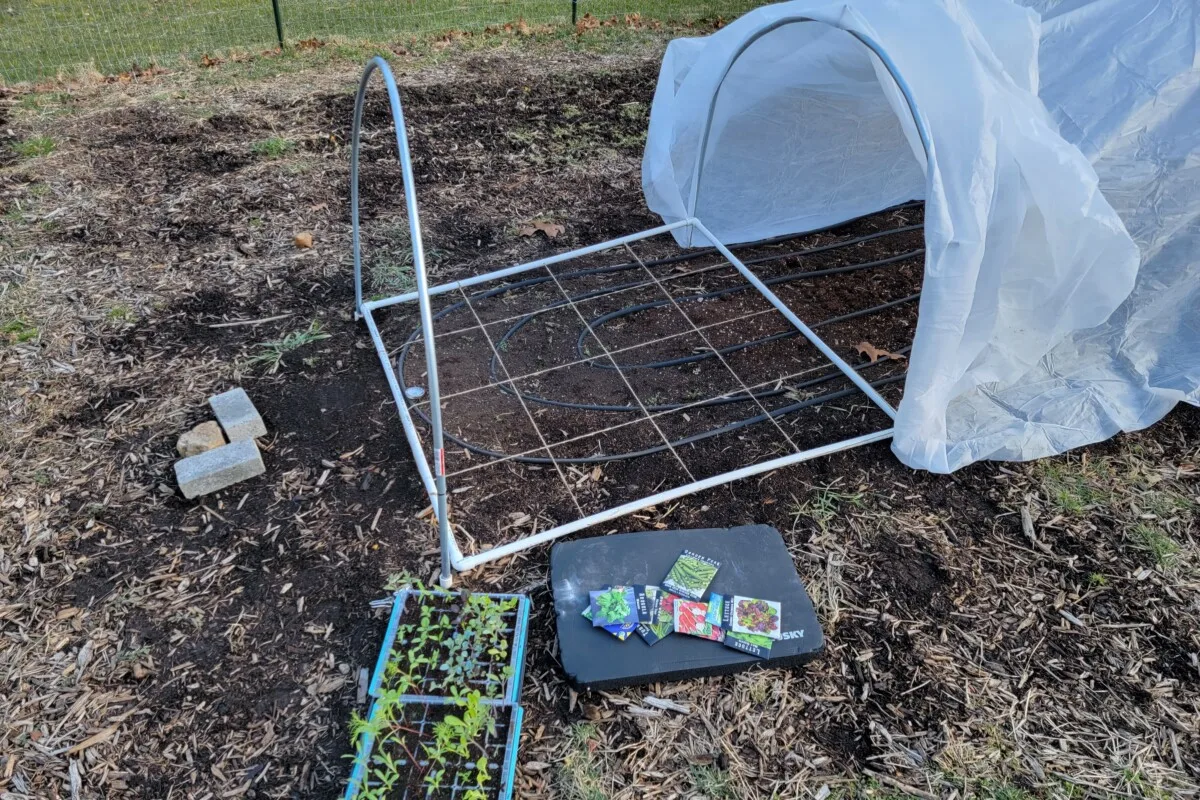
One of the most common mistakes folks make each year is planting their garden without a plan. Now, I’m not talking about the plan you made back in January with every plant hand-drawn with expensive colored pencils. Most of us generally map out our garden ahead of time with the varieties we plan on growing.
What I’m talking about is a planting plan – all the things that need to happen before you head out to the garden with your seed packets and seedlings.
Have you looked at the weather? Have you made a list of what plants get planted when? Do you have a weekend set aside or a few weekdays blocked out for those days? Have you checked over the garden tools you stored for the winter to make sure everything is ready to go? Do you have a list of any items you might need to buy or replace for the season, like those garden gloves with the hole in the finger, and don’t forget you used up the bone meal on your amaryllis this winter.
Oh, and if you didn’t make a plan for where everything needs to go, then now is the time to do it – before you get your hands dirty. Here is a list of questions that can help you tackle the job quickly.
2. Not Accounting for Mature Plant Size
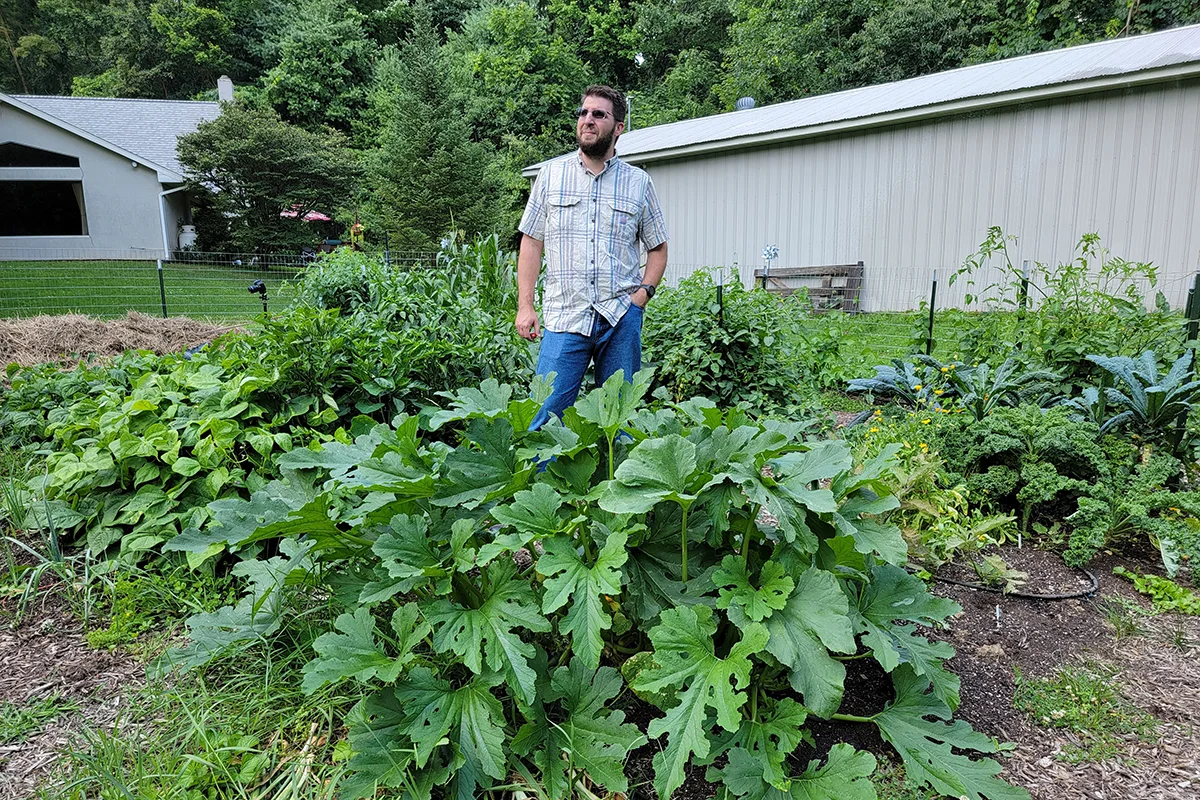
When planning your garden, it’s important to consider the mature size of each vegetable. Not only does this affect the vegetable in question but also those growing nearby. Of course, that’s easier said than done. When mapping out your garden plans, it’s hard to visualize a fully-grown zucchini plant.
This one gets easier with experience.
But even so, we’ve all found one vegetable crowding out another later in the season once everything has grown to size.
Each plant needs plenty of space to grow and produce fruit. Giving your veggies adequate space ensures there are plenty of nutrients and water to go around. And larger vegetables such as squash and tomatoes don’t end up shading out a smaller veggie. One of the greatest ways I have found to remind myself of mature plant size is to go back and look at photos of last year’s garden as I’m planning out this year.
Keep in mind, though, that with a little planning, the shade cast by a larger vegetable can be used in your favor—plant lettuces or radishes under the shade of taller plants to keep them from bolting or getting bitter.
When planning how much space vegetables need, it’s a good idea to err on the side of too much.
You can always fill in empty spots with smaller veggies like carrots or radishes. Growing vertically is another great way to deal with larger veggies that take up a lot of room.
3. Waiting Until the Last Minute to Order Seeds or Buy Seedlings
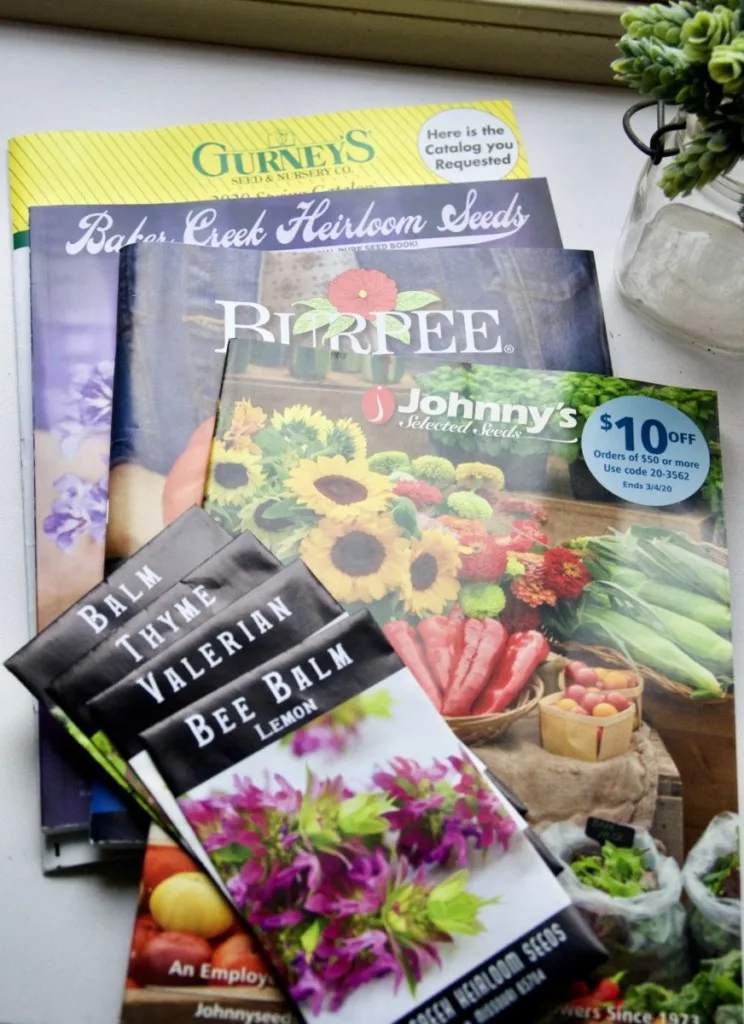
Whether purchasing seeds from a catalog or picking up seedlings at a local nursery, don’t wait until the last minute to buy them. You’ll be stuck trying to substitute what you want with what’s left over. Or worse, skipping out on a preferred variety altogether.
Purchase seeds much earlier than you would seedlings.
As soon as those seed catalogs start arriving in the new year, make a list and order what you need. If you wait, you’ll be met with “Notify Me When This Item Is Back in Stock” messages, which, as we all know, sometimes isn’t until the following year.
The same goes for gardeners who prefer to purchase seedlings locally. It seems everyone and their brother hits the nursery and big box garden centers when that first warm weekend hits. Plan ahead – make a list and buy early. If you have a preferred local spot, call them and ask when their seedlings will be ready for the season.
4. Don’t Skip Soil Testing
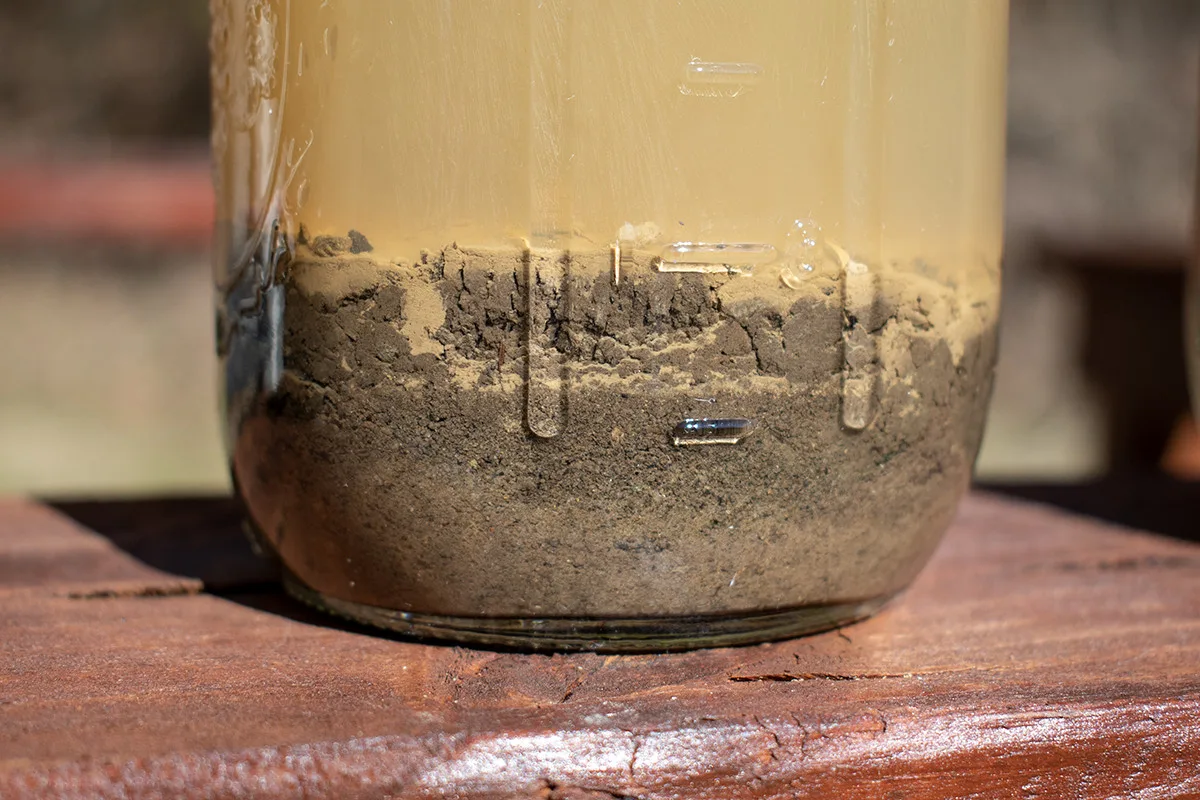
Home gardeners are notorious for indiscriminate fertilizing. It seems to be our go-to fix when our plants aren’t doing what we want them to. Slow growth? Fertilize. No fruit? Fertilize. Looking a little droopy. Must need fertilizer.
One of the smartest things you can do to ensure a bumper crop is to test your soil so you can add back only the specific deficient nutrients. Over-fertilizing leads to runoff entering our waterways and can hurt your yield. Using too much nitrogen when it isn’t needed can lead to lush, beautiful plants full of green foliage and no fruit. You need to know what’s in your soil already so you can fertilize properly.
Testing your soil goes beyond nutrients, though.
If you want healthy plants with strong roots that can access water and nutrients deep below the surface, knowing the makeup of your soil is a big help. You may not need to add nutrients, but you may need to fix sandy soil or soil with too much clay, etc. Knowing the pH of your soil is also important when planning what vegetables to plant where.
Before you put a single seed in the ground, test your soil.
5. Not Hardening Off Seedlings Grown Indoors
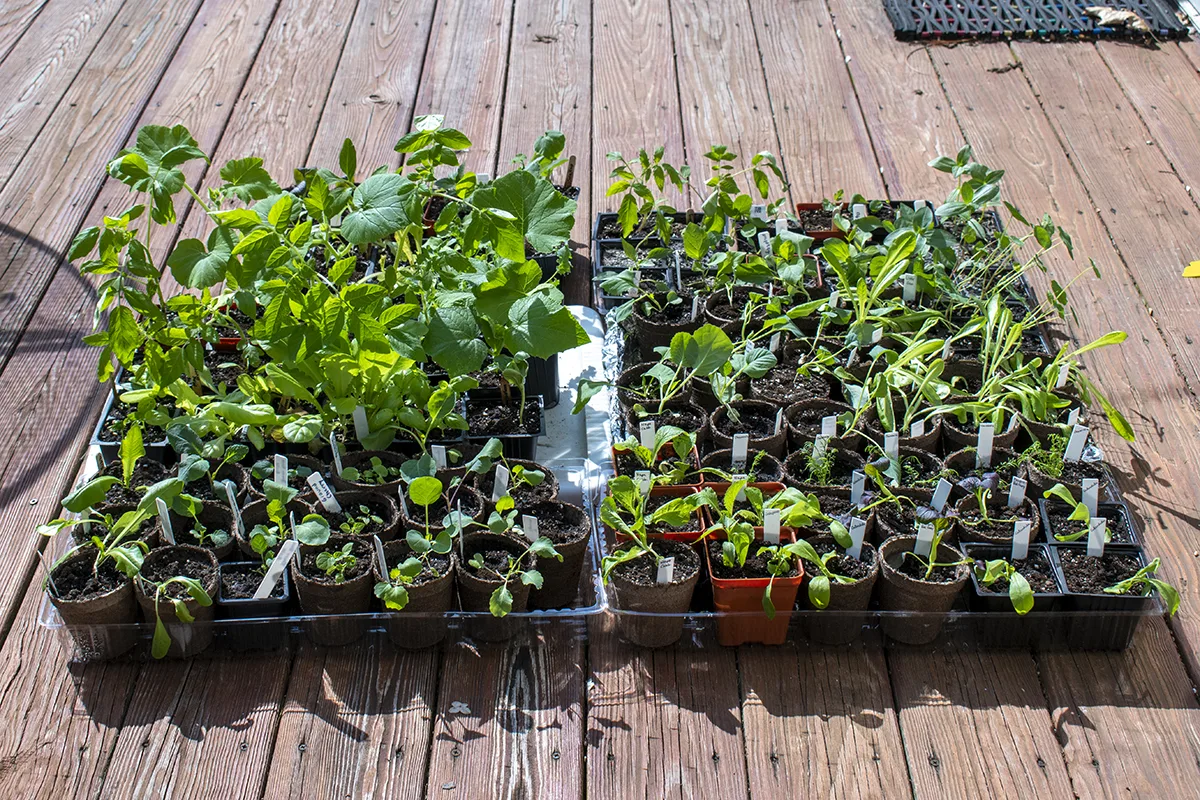
This is usually a new gardener mistake. (She says, knowing perfectly well she did this very thing several weeks ago.)
If you grow your seedlings, you must acclimate them to the outdoors. Full sun, wind, cooler temps – your tiny plants haven’t been exposed to any of these. If you move seedlings directly to the garden, chances are between transplant shock and how tender they are, you will lose them.
But don’t worry; it only takes a few days to toughen up your home-grown seedlings, and it’s worth the time and effort.
Bring them outside for half an hour to an hour at a time for a few days. Leave them outside longer each time. Choose a spot that isn’t in full sun, and that’s a little sheltered if it’s especially windy.
Keep a close eye on them and make sure you water them well. Seedlings outside tend to dry out quickly. We all know how quickly you can lose seedlings to a missed watering.
After a few days, your seedlings will be ready to go in the garden.
Seedlings grown commercially don’t require hardening off because of how they are grown. These little guys are ready to go as soon as you bring them home.
6. Not Pruning Back Herbs
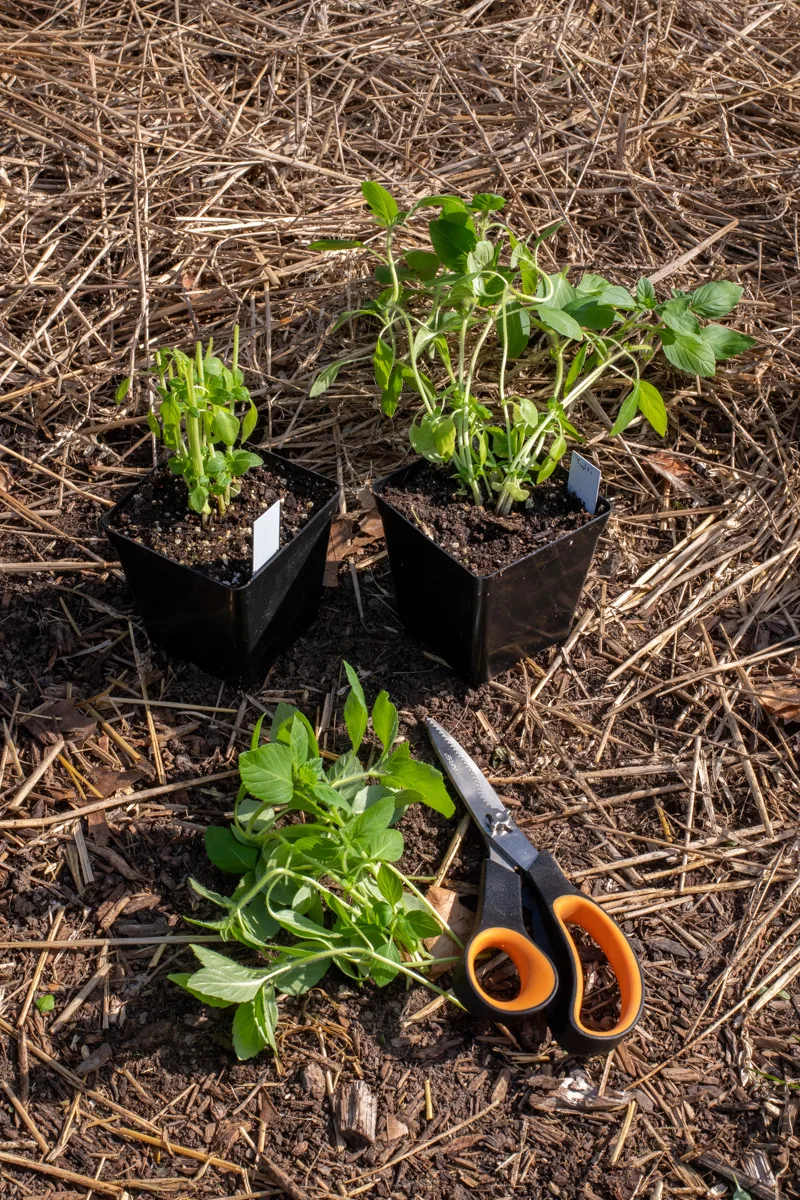
If you grow tender herbs, I’ll bet you’re making this mistake. (I know I was for the longest time.)
Many herbs benefit from a serious haircut before you plant them in your garden. By pruning them back hard, you force the plant to grow outward rather than up. The result is a bushy plant with a sturdier base that yields more of your favorite herbs.
And the best time to do this is right before you plant them in the garden. You can read up on this nifty trick here.
7. Not Letting Seed Potatoes Scab Over Before Planting Them
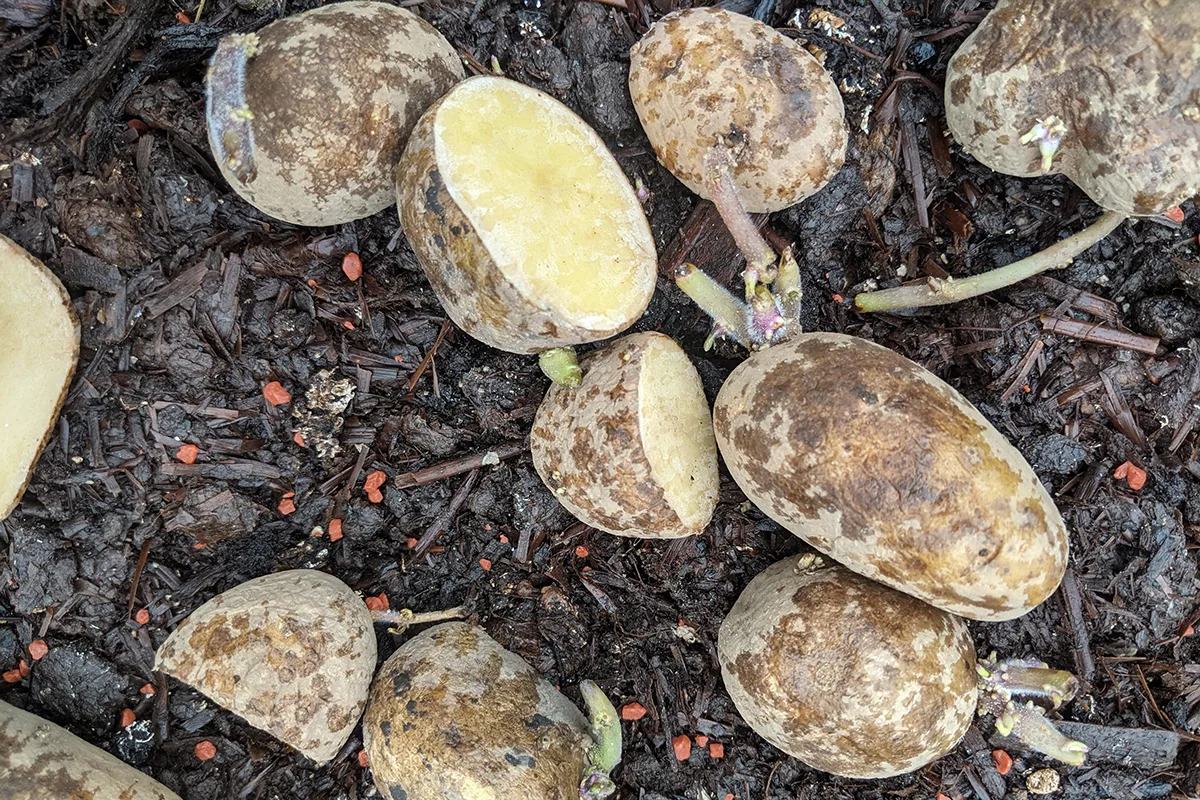
Plenty of gardeners skip out on growing potatoes because they’re so cheap at the grocery store. But I encourage everyone to grow potatoes at least once. It’s one of the most fun crops (in my humble opinion) to grow because unearthing them is like a treasure hunt in the dirt.
Plus, when you use Cheryl’s method of growing potatoes under mulch instead of burying them, harvesting them couldn’t get any easier.
Whether you chit your potatoes or not, it’s important you don’t skip out on one final step before planting them.
When planting potatoes, you want to cut larger seed potatoes into smaller chunks, each with an eye or sprout coming out of it. But don’t plant them yet. Spread them out on newspaper or flattened cardboard boxes and let them dry out for a day or two. Allowing them to “scab over” means the seed potato is less likely to rot when planted in the soil.
Related Reading – How to Grow Potatoes In a 5-Gallon Bucket
8. Not Planting Tomatoes Deeply or Sideways
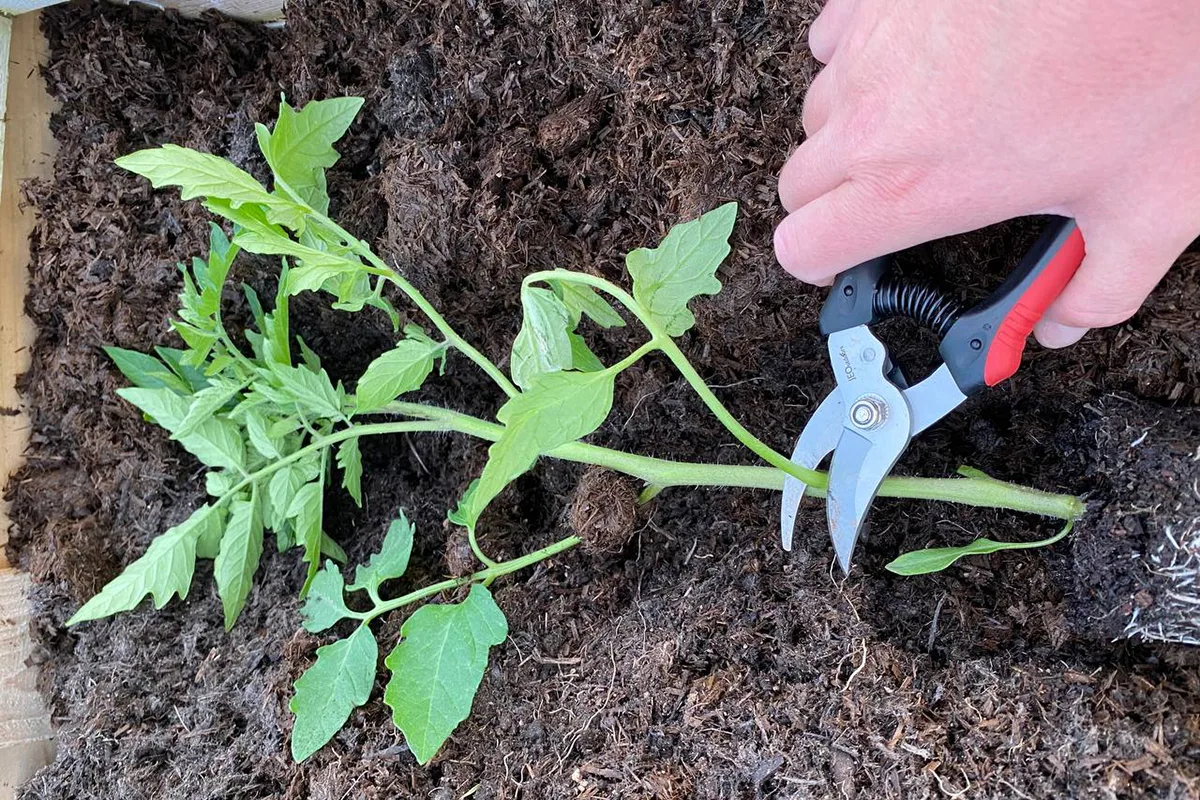
Tomatoes, like most of their nightshade cousins, produce adventitious roots, which means they will spontaneously grow roots from places other than the bottom of the plant. This gives them an advantage out in the wild, allowing them more access points for water and nutrients.
As gardeners, we prevent our tomatoes from using this natural hack by forcing them to grow up off the ground.
To compensate and ensure tomatoes have a strong root system, you should always bury them as deeply as possible or plant them sideways in a deep trench.
But there are rules to follow, and depending on what type of tomato you’re growing, it might make more sense to bury it rather than plant it sideways. Read up on the whole fascinating process here. I’ll walk you through the whole thing. (Warning: I geek out about how cool tomatoes are in this piece. My fellow crazy tomato gardeners will appreciate it.)
9. Forgetting to Soak or Scarify Seeds
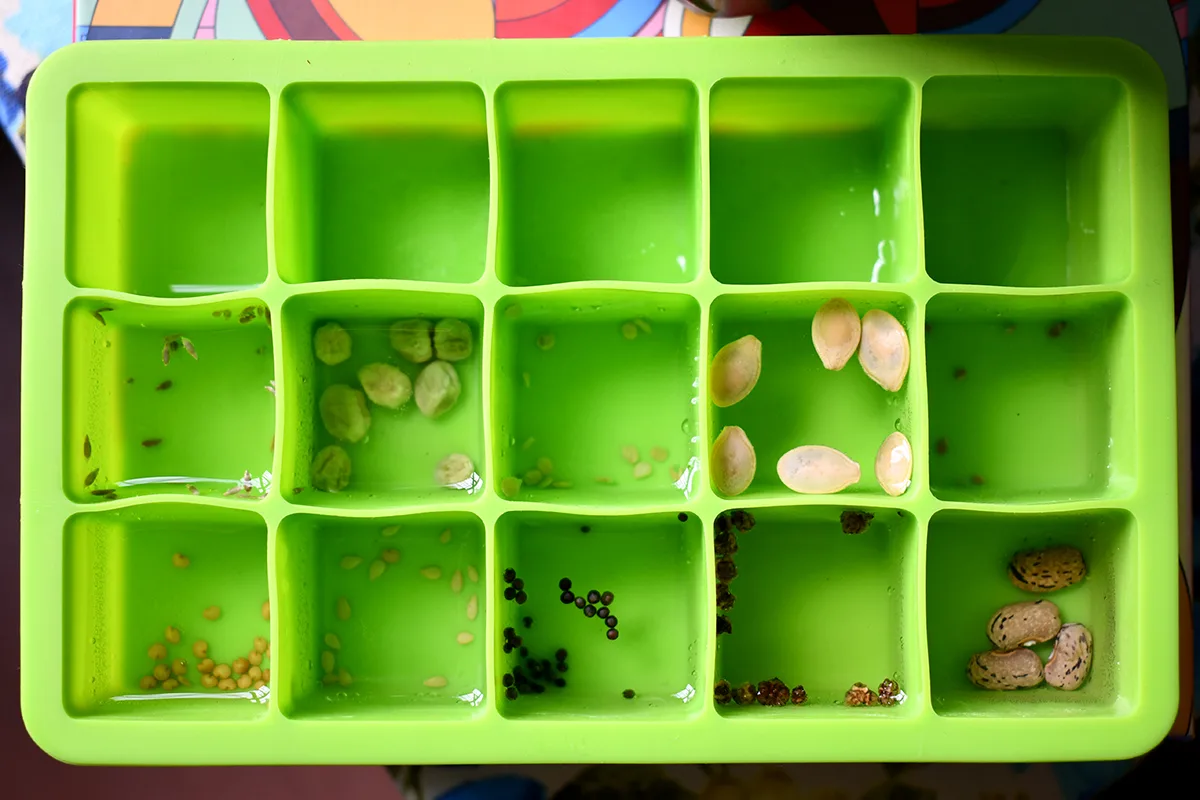
There’s nothing more frustrating than planting seeds and waiting patiently for them to pop up from the soil. And waiting. And waiting. And scratching your head. And swearing and getting the packet of seeds out again.
There are some pretty easy things you can do to help your seeds germinate. Soaking them overnight before you plant them is only one way of boosting your germination rates. Of course, it’s not necessary, but it sure makes a big difference in how many seeds sprout.
If you’re planting seeds this spring, set aside the time to soak them before you plant them.
10. Planting Too Early or Late
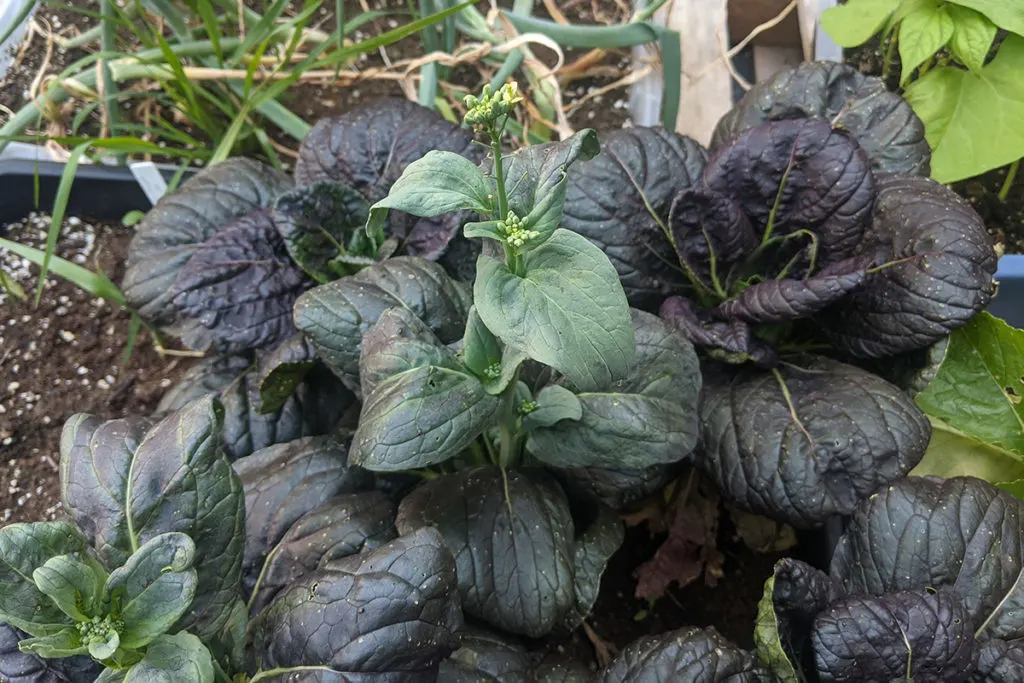
I am guilty of planting seedlings early every single year. You would think that after thirty-some years of gardening, I would learn. But at least I’m not alone in this one. Optimistic gardeners everywhere are forever sacrificing plants to quickly changing spring temperatures.
To set yourself up for success, it’s important to know what USDA Hardiness Zone you are in.
The USDA offers an interactive map; you can find your zone by entering your zip code. (Similar maps should be consulted in other countries.)
Once you know your hardiness zone, you need to know your zone’s expected last frost dates. You can find an interactive map for frost dates here.
It’s important to remember these dates are guidelines based on historical data.
For reference, my last expected frost date for my region was April 20. The 20th has come and gone, and we’ve had three frosts since that date.
Check your local ten-day forecast once you’re within the time frame of your expected last frost date. You’ll have a better idea of when you can safely plant seedlings outside. It’s also smart to have frost protection ready during those first couple weeks after planting vegetables.
Another consideration is soil temperature. Some seeds won’t germinate if the soil is too cold, like beans. Check seed packets for information concerning soil temps. An inexpensive soil thermometer is a handy tool that takes the guesswork out of soil temps.
The other side of this coin is planting vegetables too late in the spring.
Just as some seeds won’t germinate in cold soil, some do better in cooler weather. Plenty of spring vegetables, if planted too late in the season, will quickly bolt as the weather warms up. Plant lettuces, spinach, and brassicas such as cabbage, broccoli and Brussels sprouts early in the season.
Depending on how warm your region is, you may have better luck planting brassicas as a fall crop. Not to mention all brassicas taste better after going through a freeze or two.
Again, all of this falls under the planning category. It helps to have suggested planting dates and preferred soil temps written down when planning your garden.
11. Not Checking the Long-Term Forecast Before and After You Plant
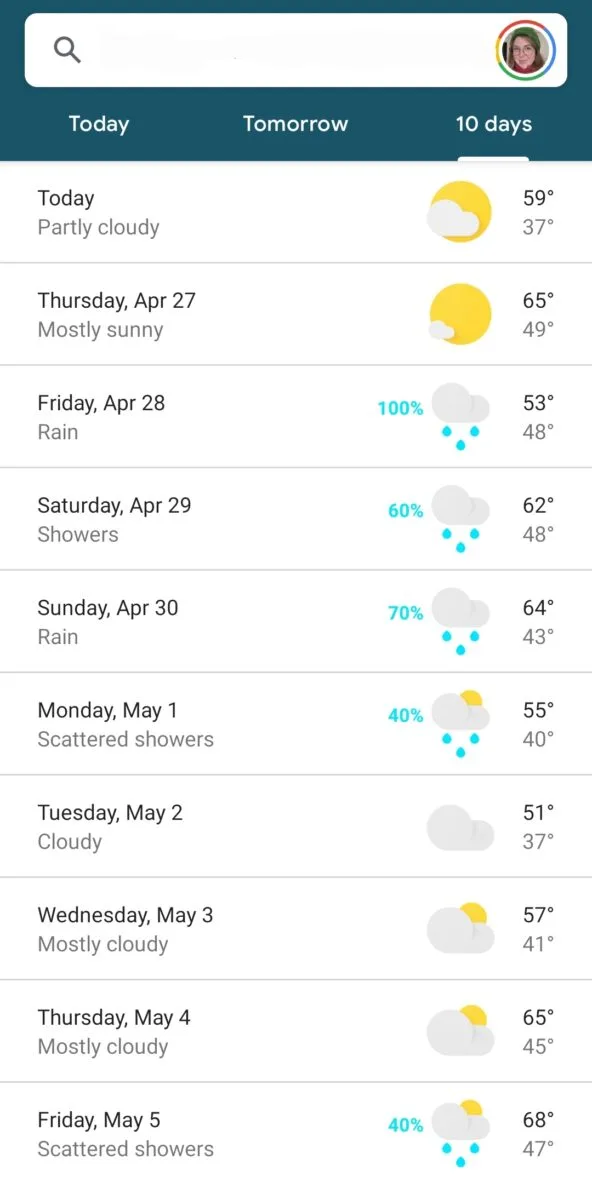
Sure, we might check the weather a couple of days before we plant, but as I mentioned, last freeze dates are approximations. And we all know how sneaky Mother Nature can be. Check the long-term (usually ten days) forecast for your area and pay close attention to nighttime temperatures.
You want to make sure you’re planting your vegetables during a stretch with no freezing nighttime temperatures. Your plants will have plenty of time to set down roots, recover from transplant shock and get established.
If you notice more than a few nights with freezing temps, you may want to wait another week before starting to plant.
As the writing on the back of the seed packet says – wait until all danger of frost has passed. It’s there for a reason. (I’m reiterating that more for myself than you.)
I can tell you from personal experience there is nothing like walking out to the garden, peeling back your carefully applied poly-fabric frost cover and finding dead seedlings where your healthy pepper plants used to be.
12. Not Adding Anything to Transplant Holes
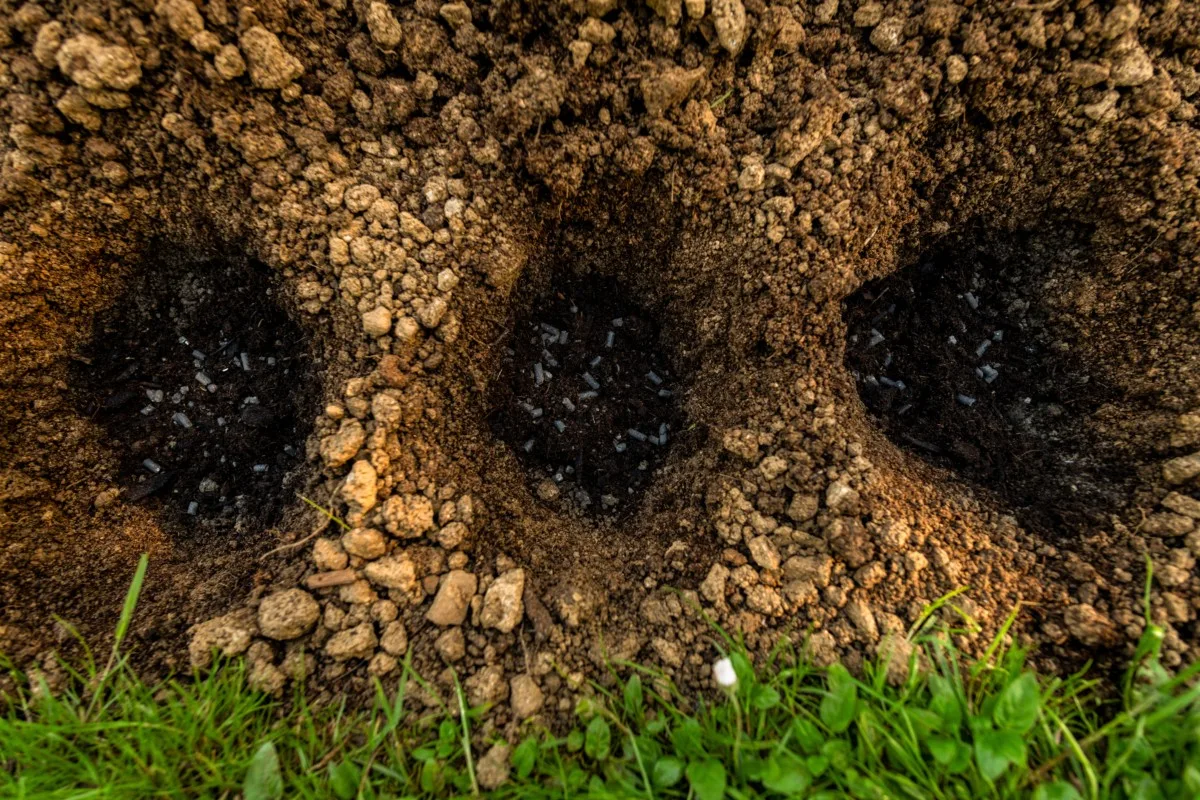
You’ve tested your soil, and you know what nutrients are needed. Well, planting is the perfect time to give your plants a little individual attention. Before you poke that seedling in the ground, put your preferred soil amendment in the hole.
By adding soil amendments when planting, you cater to each plant’s specific needs.
And because you’re adding fertilizer or nutrients to each plant, rather than a larger area, you’re using less, which can save you money and prevent runoff.
Not sure what to put in those holes? Here are nine different options to give seedlings a boost when you plant them.
13. Forgetting to Loosen the Root Ball
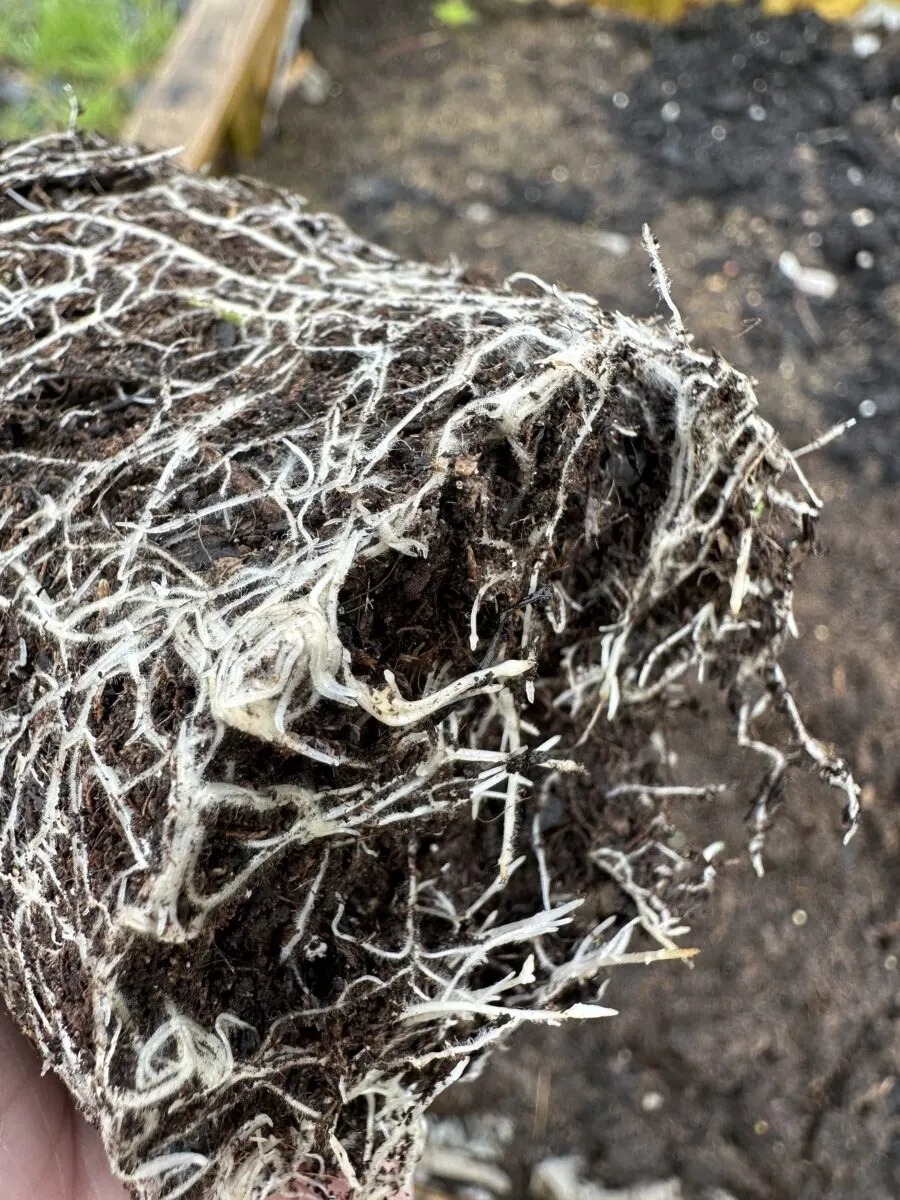
You’ve hardened off your seedlings; you put compost in the seedling hole, but before you put that plant in the ground, give it a little ruffle.
Seedlings have spent a couple of months growing in small cramped containers. Now, we’re going to put them in the garden with the expectation that they will send down deep roots where the water and nutrients are.
Since they started in such cramped quarters, seedlings come out of their pots rootbound.
Gently squish the root ball to loosen up the roots. You want to move them around a bit so they look more like dangling hair than a square-shaped nest. As you fluff up the root ball, you may notice some roots hang down further than the rest, feel free to trim the roots up a little with a clean pair of scissors.
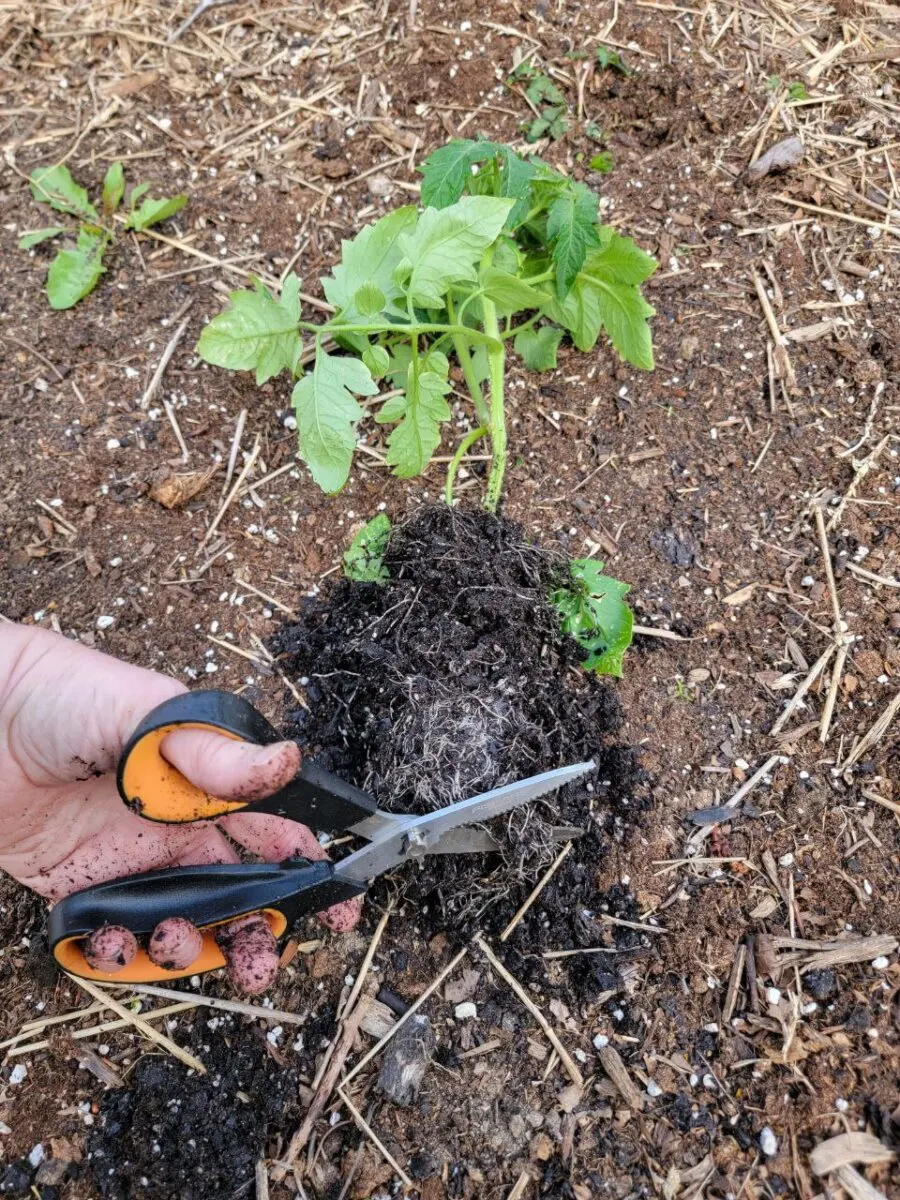
Now that seedling is ready to move into its permanent home. And it will have a much easier time sending roots down deep.
14. Forgetting to Water In New Plants
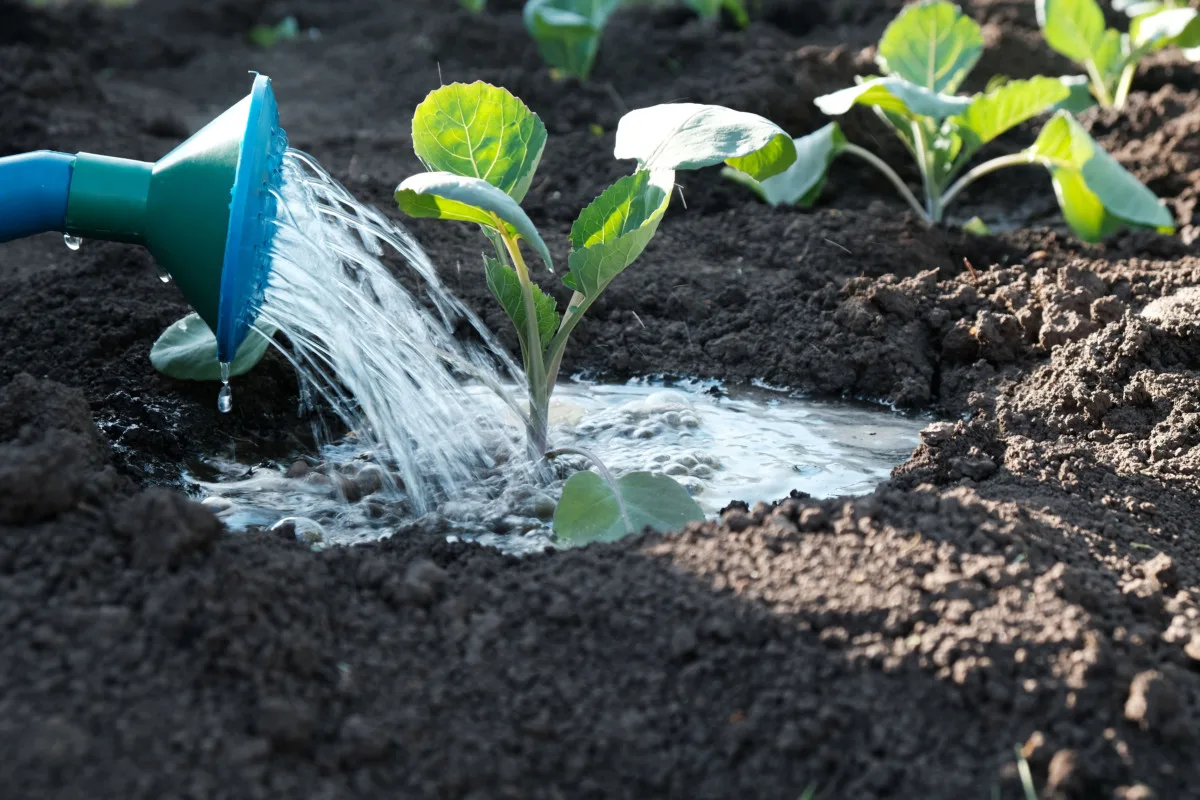
Newly transplanted seedlings require water. Even if it just rained last night. Even if their potting soil is quite damp, it doesn’t matter; they will still need a drink once planted.
Transplant shock is inevitable no matter how careful you are, but it’s easily remedied with the right post-planting care. And that always starts with watering in a new plant.
Remember, the root system is quite small and will only be able to access water within the immediate vicinity for the first few days, which you will need to provide.
If you forget to water in new transplants, they will quickly remind you with one glance at your garden full of droopy plants. But it’s incredible how quickly they perk up when you water them. A good habit to get into is to have your watering can at your side when transplanting in the garden.
15. Not Mulching
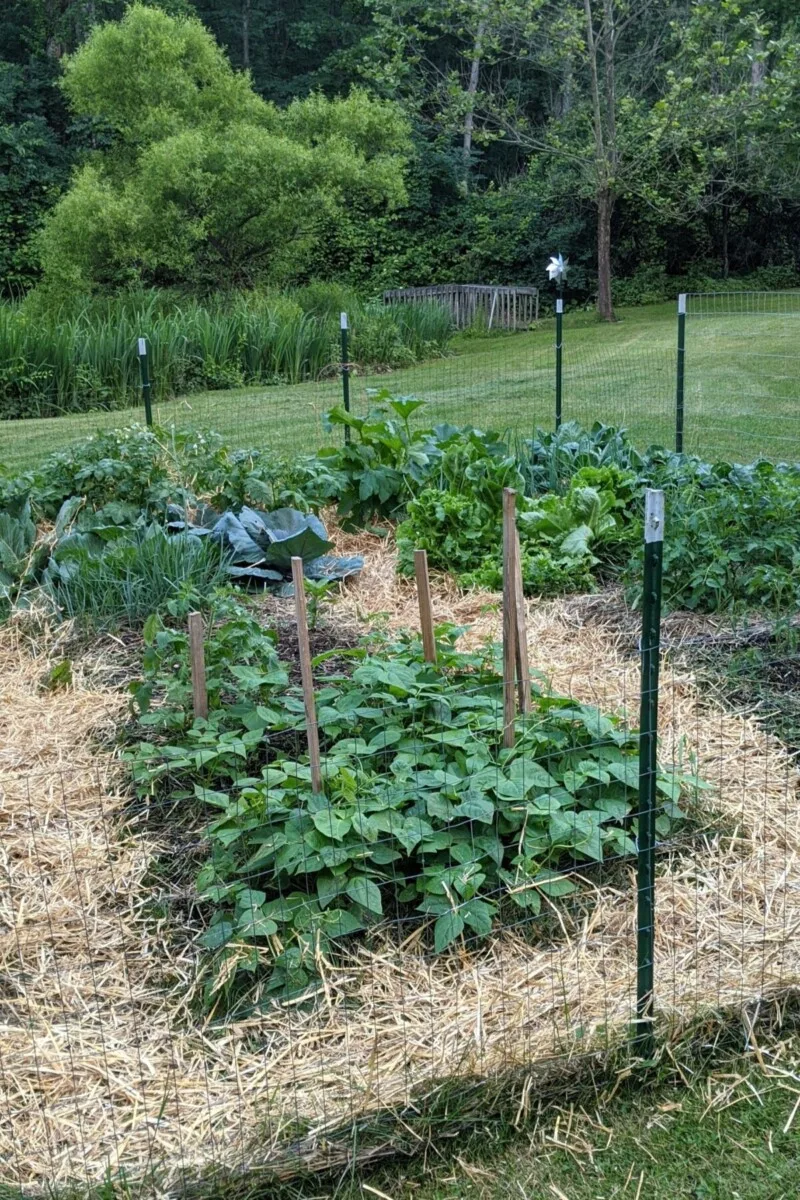
Do you like weeding? How about watering every other day when it’s crazy hot? No? Me neither. This is why putting mulch down once your plants are established is so important. It makes every part of gardening easier.
Mulching around your plants keeps moisture from evaporating, smothers nutrient-stealing weeds, and prevents soil erosion. And if left in place, the mulch will break down, improving your soil over time.
Mulch around seedlings as soon as you plant them. If you’re planting seeds, wait until they have germinated and grown to about 4” tall before mulching. But regardless of what you plant, you should mulch. It will make your growing season easier.
16. Not Putting In Stakes/Supports Before They’re Needed
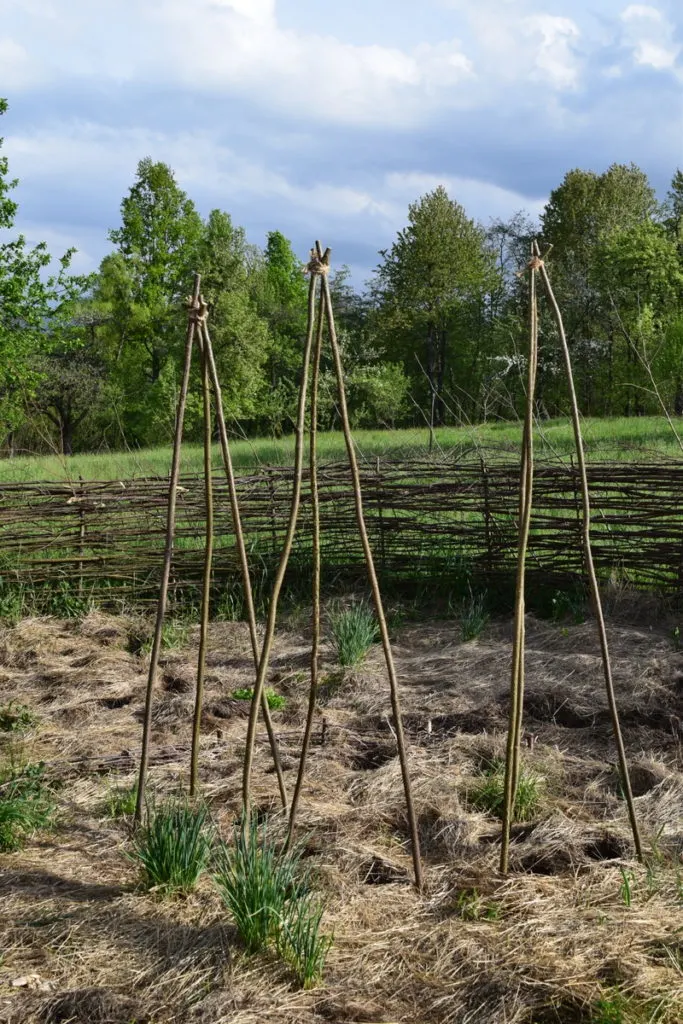
When should you put stakes or supports in the ground? Before you need them. In fact, it’s best to set up your planned support for each vegetable as soon as you plant them, especially if it means poking something in the ground.
You don’t risk puncturing an established root system by getting your supports in the ground and set up now. Not to mention we all know how busy we get once the weather warms up. I can’t tell you how many stems I have snapped over the years, trying to gently wiggle a plant that’s too big into a cage.
When it comes to setting up supports for cucumbers, summer squash, tomatoes, etc., it’s a good idea to go by the wise words your grandmother used to say about the huge sweater she knit for you, “You’ll grow into it.”

Get the famous Rural Sprout newsletter delivered to your inbox.
Including Sunday ramblings from our editor, Tracey, as well as “What’s Up Wednesday” our roundup of what’s in season and new article updates and alerts.


